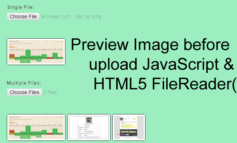Guzzle is a PHP HTTP client that makes it easy to send HTTP requests and trivial to integrate with web services. We are using Guzzle to integrate PayPal API.
You can use the PayPal Payments API, documented at: https://developer.paypal.com/docs/integration/direct/rest-payments-overview/ to let your users make payments to you of dynamically/arbitrarily generated sums.
To use the API, first you would need to get your PayPal Client and Secret Id, which are unique strings given to you in exchange for creating an application. You can create an application at: https://developer.paypal.com/developer/applications/create
After you get your client ID and secret key, you would have to get a token (OAuth token) which you would be able to use to manage payments.
The following PHP request with Guzzle can get you a token that you can later use to manage payments:
try {
$client = new \GuzzleHttp\Client();
$res = $client->request('POST', 'https://' . $paypalClientId . ':' . $paypalClientSecret . '@'.self::$paypalUrl.'/v1/oauth2/token', [
'Accept' => 'application/json',
'Accept-Language' => 'en_US',
'form_params' => [
'grant_type' => 'client_credentials'
]
]);
$responseBody = json_decode($res->getBody()->getContents());
if (!$responseBody || !$responseBody->access_token) {
// could not get token
}
$token = $responseBody->access_token;
} catch (\Exception $ex) {
$error = $ex->getMessage();
}
}
It is assumed that you set up your $paypalClientId and $paypalClientSecret variables. The token should be saved in the $token variable.
Afterwards, you can initiate the payment with the following code:
$saleData = '{
"intent":"sale",
"redirect_urls":{
"return_url":"' . $returnUrl . '",
"cancel_url": "' . $cancelUrl . '"
},
"payer": {
"payment_method":"paypal"
},
"transactions":[
{
"amount":{
"total":"' . $amountToBePaid . '",
"currency":"USD"
},
"description": "A coffee delivery in the ' . $shopName . ' coffeeshop” }
]
}';
try {
$client = new \GuzzleHttp\Client();
$paymentResponse = $client->request('POST', 'https://'.$paypalUrl.'/v1/payments/payment', [
'headers' => array(
'Content-Type' => 'application/json',
'Authorization' => "Bearer $accessToken",
),
'body' => $saleData
]);
$paymentBody = json_decode($paymentResponse->getBody()->getContents());
} catch (\Exception $ex) {
$error = $ex->getMessage();
}
Again, you would need to set up some variables here – the $returnUrl when users confirm the payment, the $cancelUrl when users cancel a payment, you need to pass your access token, and the $amountToBePaid.
After you make this request, you would get a response in the $paymentBody variable. You can use it to redirect the user to the appropriate URL and when he/she comes back, you can execute it and make the actual money transfer. You need to redirect the user to the URL returned in:
$paymentBody->links[1]->href;
When the user returns, you are expected to have a couple of GET parameters – paymentId and PayerID. You can use them to finalize the payment in the following way:
$jsonBody = '{ "payer_id" : "' . $_GET[‘payerID’] . '" }';
try {
$client = new \GuzzleHttp\Client();
$paymentResponse = $client->request('POST', 'https://'.self::$paypalUrl.'/v1/payments/payment/' . $_GET[‘transactionId’]. '/execute/', [
'headers' => array(
'Content-Type' => 'application/json',
'Authorization' => "Bearer $accessToken",
),
'body' => $jsonBody
]);
$paymentExecutionBody = json_decode($paymentResponse->getBody()->getContents());
return $paymentExecutionBody;
} catch (\Exception $ex) {
return $ex->getMessage();
}
You can use the $paymentExecutionBody variable to save the details of the digital transfer in case of need as they will be stored in it.




Leave a Reply